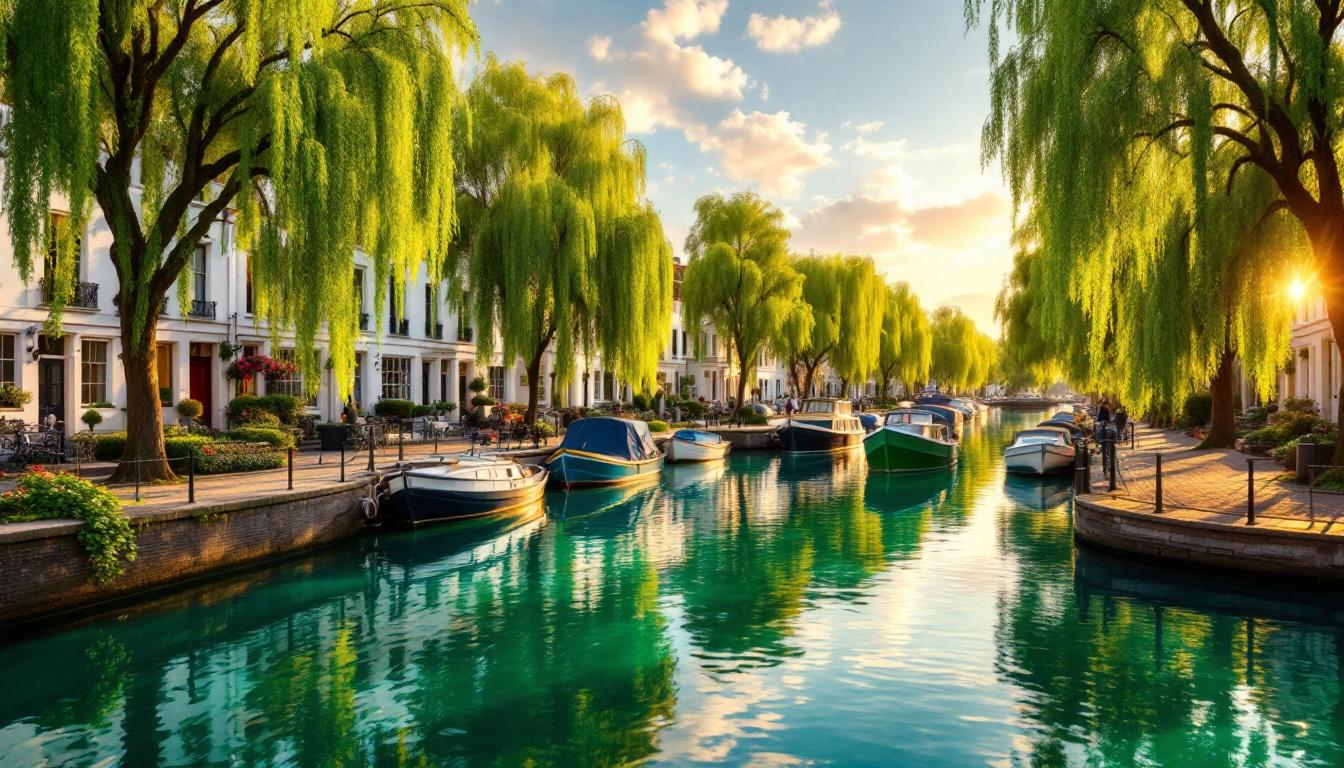The name spills from locals’ lips with quiet pride – Little Venice, they call this hidden canal village tucked behind London’s bustling streets. Lord Byron himself coined the comparison, though residents whisper that their waterways offer something Venice’s crowded canals never could: genuine peace.
Walk along the tree-lined towpaths where 400 houseboats bob gently in Victorian-era locks, and you’ll understand why locals guard this secret so carefully. While tourists jostle through Camden’s chaotic markets just two miles away, Little Venice maintains the hushed atmosphere of a countryside village that happens to exist in Zone 2.
This isn’t just local bias speaking – it’s measurable tranquility in a city where quiet spaces command premium prices.
The Victorian engineering that creates natural calm
Triangular basin design keeps crowds naturally small
The genius lies in the junction itself – where the Grand Union and Regent’s Canal meet in a carefully engineered triangular basin designed for canal boats to turn around. This Victorian-era bottleneck naturally limits foot traffic, creating an intimate scale that feels more like a private garden than a public waterway.
Regency architecture creates an exclusive atmosphere
White-painted stucco mansions line the waterfront, their elegant facades reflected in still canal waters. These 19th-century townhouses weren’t built for tourism – they house an affluent residential community that values discretion over discovery, maintaining the village’s protected character through careful stewardship.
The floating community locals want to preserve
Houseboat residents create living cultural heritage
Unlike Venice’s tourist-filled gondolas, Little Venice’s waterways pulse with authentic residential life. Canal boat dwellers tend floating gardens, maintain Victorian lock mechanisms, and create a living museum of British waterway culture that can’t be replicated in any guidebook.
Local businesses operate at village pace
Waterside pubs serve Sunday roasts to regulars who arrive by boat, while canal-side workshops repair narrowboat engines using techniques passed down through generations. The 5-minute walking radius contains everything residents need, eliminating the commercial pressure that transforms authentic neighborhoods into tourist attractions.
Why locals say it surpasses the Italian original
Crowd levels that Venice can only dream about
While Venice drowns under 25 million annual visitors, Little Venice welcomes maybe 25 on a busy afternoon. Locals joke that you can actually hear birds singing over the water – a luxury impossible in St. Mark’s Square, where tourist chatter drowns out even the cathedral bells.
Authentic experiences without tourist pricing
A canal-side pint costs £5.50 compared to Venice’s €8 spritz, while boat trips run by local families offer personal stories instead of scripted commentary. Residents share their knowledge freely because they’re not competing for tourist euros – they’re simply proud of their neighborhood’s hidden beauty.
The protective culture that keeps it peaceful
Residential zoning that prioritizes community
Local planning restrictions maintain the area’s residential character, limiting commercial development that would attract coach tours. Affluent residents actively oppose over-tourism, preferring thoughtful visitors who respect the village atmosphere over Instagram crowds seeking the perfect canal shot.
Summer traditions that welcome respectful visitors
July brings canal-side dining at tables that appear organically along the towpaths, while early morning walks offer the best photography light without disturbing residents. Local boat operators prefer smaller groups, creating intimate experiences that feel more like visiting friends than consuming tourist attractions.
Planning your respectful visit to Little Venice
When do locals recommend visiting?
Early mornings and weekday afternoons see the fewest tourists, while Tuesday through Thursday offer the most authentic village atmosphere. Avoid weekend afternoons when day-trippers from central London occasionally discover the area.
How should visitors behave respectfully?
Keep voices low near houseboats, stay on designated towpaths, and support local businesses rather than chain establishments. Photography etiquette means asking permission before capturing people’s homes, even floating ones.
What’s the best way to experience the canals?
Book small boat tours with local operators who share personal stories rather than tourist scripts. Family-run companies offer authentic perspectives that help visitors understand why residents protect this peaceful corner of London so carefully.
The locals call it Little Venice not as marketing, but as quiet appreciation for something genuinely special. In a city where authenticity often gets commodified, this canal village remains refreshingly, protectively real.
Visit with the respect locals show their own neighborhood, and you’ll understand why they consider their corner of London more peaceful than any Italian original.
